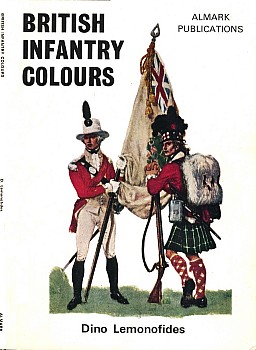Login
Разделы сайта
Поиск по сайту
Календарь
Реклама
British Infantry ColoursУниформа / British Infantry Colours
 Издательство: Almark Publishing Автор: Dino Lemonofides Название: British Infantry Colours Язык: английский Год издания: 1971 Количество страниц: 56 ISBN: 0-85524-020-2 Формат: pdf Размер: 25 мб SINCE earliest times, man has fought behind a recognisable sign. Firstly, as a distinguishing mark of his own side, and as a rallying point in the melee of battle. These early symbols were most often a brightly coloured animal or bird. With the development of body and horse armour in the Middle Ages,this too was covered with colours and devices and brought about the beginning of heraldry. In the late 16th and early 17th centuries, armies were adopting a more organised arrangement of formations. Pioneered by Gustavus Adolphus,regiments of horse and foot were divided into regular numbers of units,each composed of a definite number of men. This simplification of the way men now fought was reflected, not only in the introduction of the uniform, but also in the symbols that they fought under; the regimental flag had come to stay. The great respect shown for the Regimental Colours of the modern British army with its sophisticated equipment and tremendous fire power, may seem an anachronism, until one remembers that they represent the real spirit of the regiment. These standards which bear battle honours such as Minden, Waterloo, Alma, Somme, Dunkirk and Korea, are not only a silken history of the regiment, but a focus of pride to those now serving and an object of their loyalty to those, often of the same family, long faded away. No modeller of military miniatures can doubt the attraction a flag adds to a model. The individual figure is enhanced by its added colour and animation, and is as much a focus of action and interest to the wargamer as the originals were on the battlefield. The intention of this book is to give both student and modeller a condensed, easy to follow work of reference, using the maximum possible number of illustrations. With this in mind, the coloured drawings are deliberately produced in a flat design format to show the detail and are all to a scale of 54 mm, which matches the 'standard' scale for model soldiers. A number of line drawings and contemporary photographs are also included. This book covers infantry of the line and the foot guards from the beginnings of the standing army in 1660. The standards and guidons of the cavalry, including their drum banners, will follow in the companion book British Cavalry Colours. The author would like to record his appreciation to Captain A. E. Haswell-Miller for permission to use the cover plate and to Soldier magazine for their kind help and loan of photographs.
|





 Информация
Информация